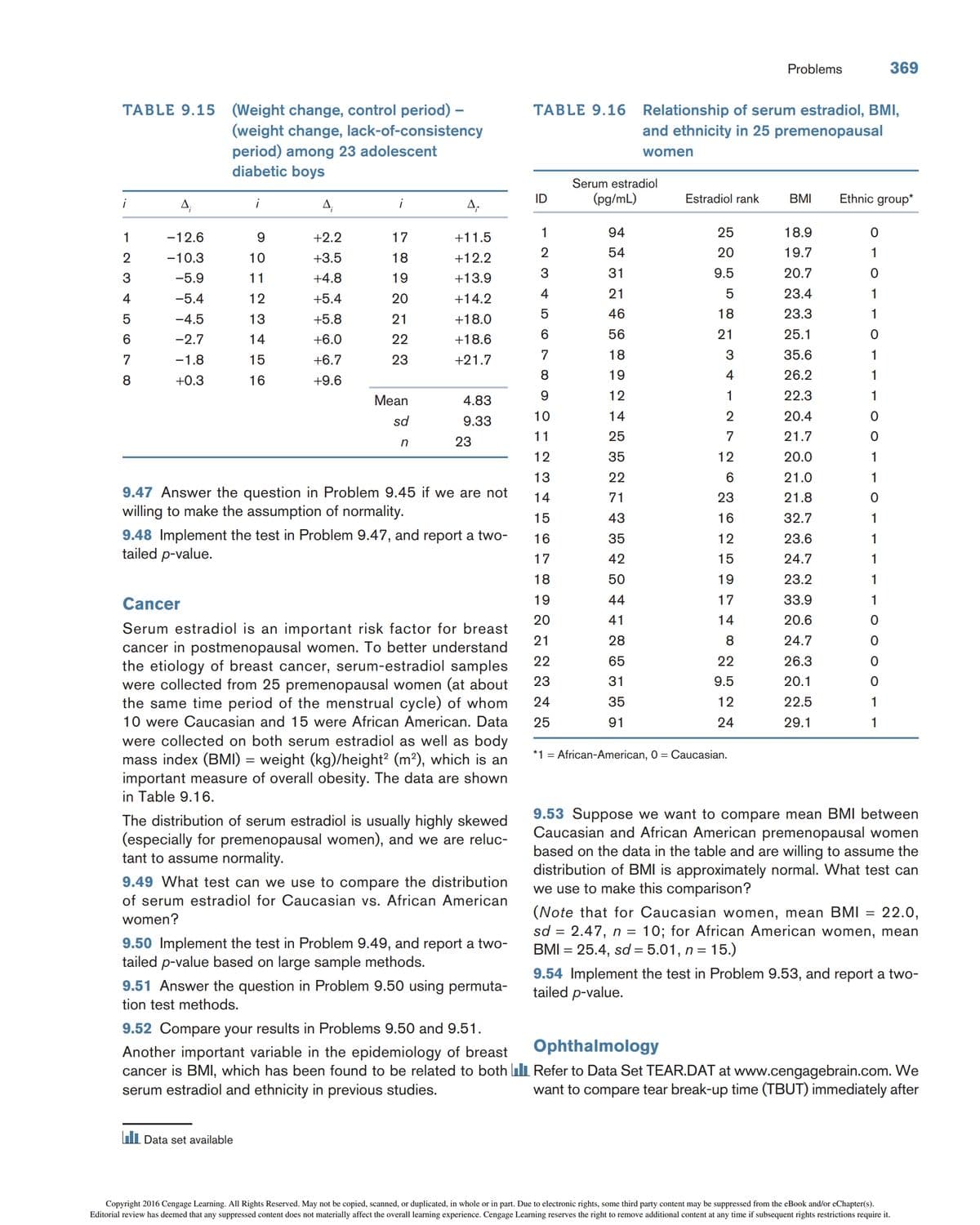Serum estradiol is an important risk factor for breast cancer in postmenopausal women. To better understand the etiology of breast cancer, serum-estradiol samples were collected from 25 premenopausal women (at about the same time period of the menstrual cycle) of whom 10 were Caucasian and 15 were African American. Data were collected on both serum estradiol as well as body mass index (BMI) = weight (kg)/height2 (m2), which is an important measure of overall obesity. The data are shown in Table 9.16. The distribution of serum estradiol is usually highly skewed (especially for premenopausal women), and we are reluctant to assume normality. HW Question: What test can we use to compare the distribution of serum estradiol for Caucasian vs. African American women? Implement the test and report a two-tailed p-value based on large sample methods Here's my approach and I'm not sure if this is correct. I am using the Wilcoxon rank sum test for this problem. Group 1 (African-American): n=15 Group 2 (Caucasian): n=10 Two tie groups (Range of Ranks 9-10, 11-13) R1=20+5+18+3+4+1+12*3+6+16+15+19+17+24=184 E(R1) = 15*(15+10+1)/2 = 195 g=2, t1 = 2, t2 = 3 Using the test statistic formula for R1 != E(R1) and ties, T= 0.583 p-value = 0.5599>0.05. Failed to reject H_0. We conclude that the distribution of serum estradiol is not significantly different between Caucasian and African American women groups
Serum estradiol is an important risk factor for breast cancer in postmenopausal women. To better understand the etiology of breast cancer, serum-estradiol samples were collected from 25 premenopausal women (at about the same time period of the menstrual cycle) of whom 10 were Caucasian and 15 were African American. Data were collected on both serum estradiol as well as body mass index (BMI) = weight (kg)/height2 (m2), which is an important measure of overall obesity. The data are shown in Table 9.16.
The distribution of serum estradiol is usually highly skewed (especially for premenopausal women), and we are reluctant to assume normality.
HW Question: What test can we use to compare the distribution of serum estradiol for Caucasian vs. African American women? Implement the test and report a two-tailed p-value based on large sample methods
Here's my approach and I'm not sure if this is correct.
I am using the Wilcoxon rank sum test for this problem.
Group 1 (African-American): n=15
Group 2 (Caucasian): n=10
Two tie groups (
R1=20+5+18+3+4+1+12*3+6+16+15+19+17+24=184
E(R1) = 15*(15+10+1)/2 = 195
g=2, t1 = 2, t2 = 3
Using the test statistic formula for R1 != E(R1) and ties, T= 0.583
p-value = 0.5599>0.05.
Failed to reject H_0. We conclude that the distribution of serum estradiol is not significantly different between Caucasian and African American women groups.

Trending now
This is a popular solution!
Step by step
Solved in 3 steps









